When choosing the fabrics for your swimsuits, you have a lot of different options to choose from. Each type of cloth has advantages and disadvantages, so it’s critical to select the ideal one for your business.
In this post, we’ll look at some of the most common types and We’ll point the right direction for you on how to pick the best one for your requirements.
So, whether you’re just started in the swimsuit industry or looking for ways to update your current line-up, read on for all the info you need!
There are two major fabric options
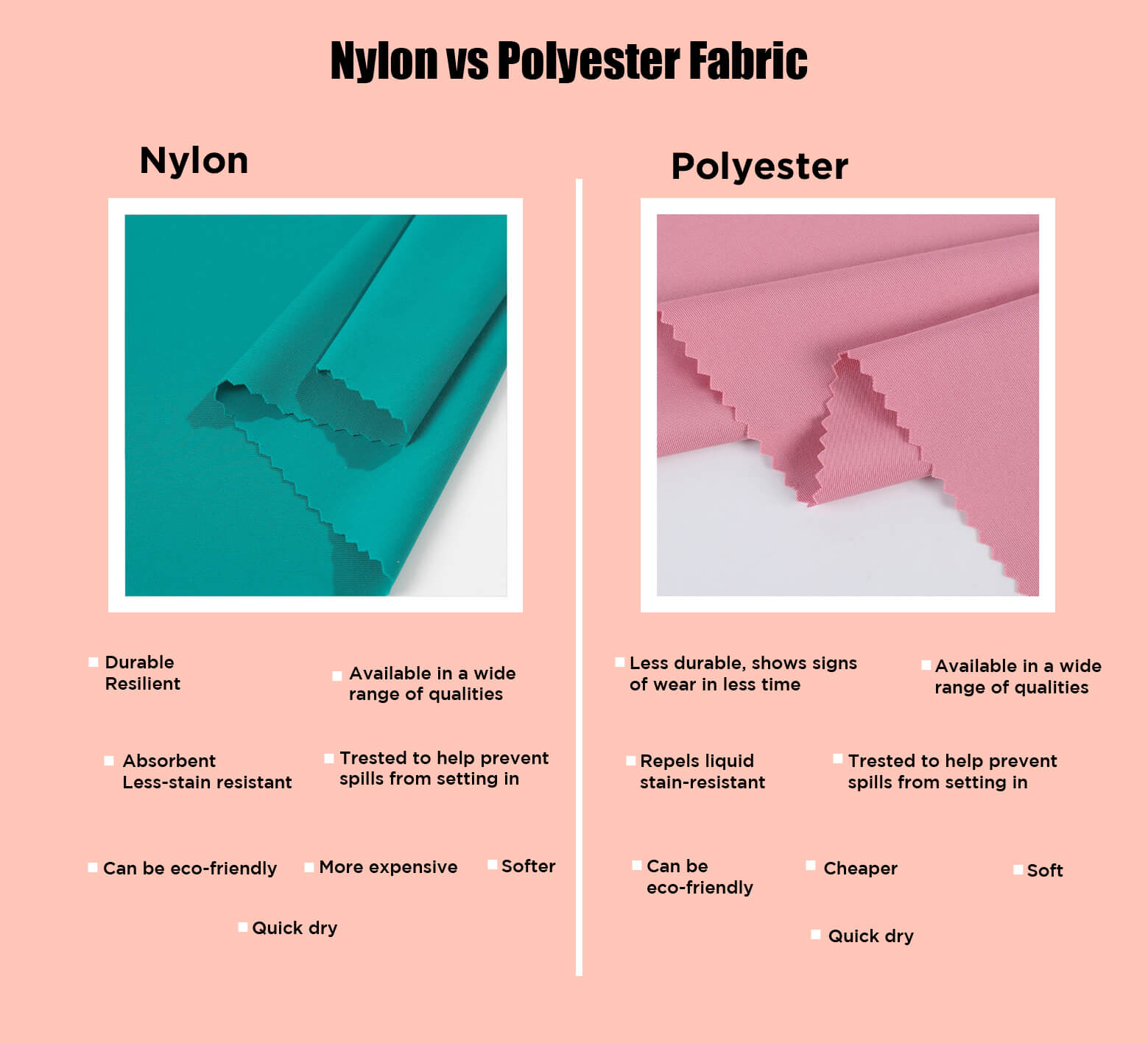
NYLON BLENDS
Female swimwear has come a long way since its inception. Nylon blends are now what you will come across most in the female swimwear fashion world. The first nylon suits were introduced in the early 1940s and quickly gained popularity due to their sleek look and feel. Nylon is still the fabric for many swimwear designers due to its durability and chlorine-resistant properties.
WHY?
Nylon is a strong and durable fabric, making it ideal for swimsuits.
- Durability
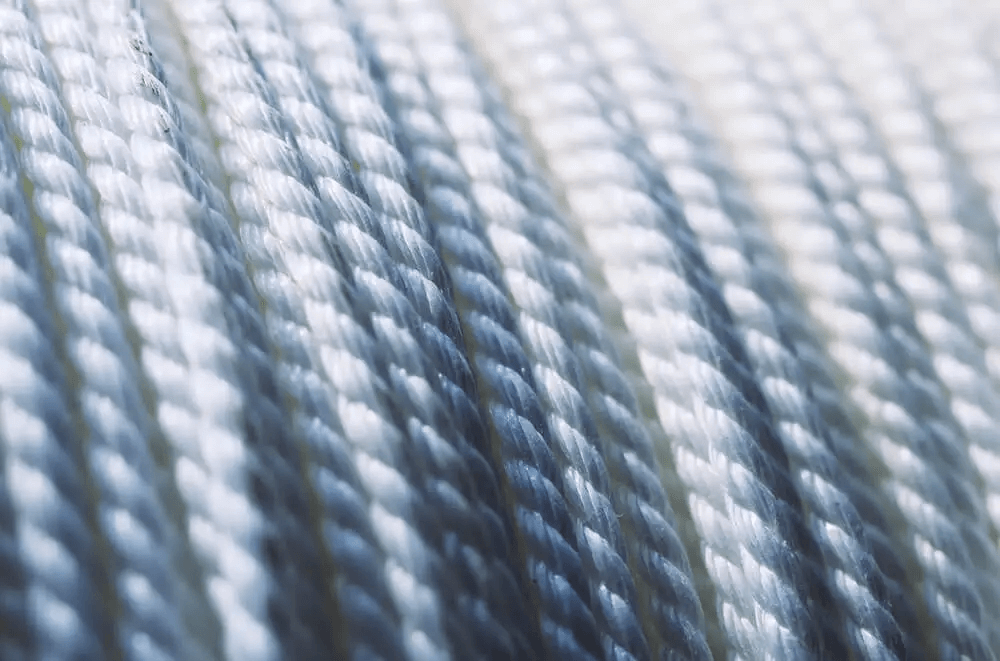
Nylon is a popular material for ropes since it is more durable and sturdy than polyester.
In terms of tensile strength, nylon is a highly durable fiber. It is strong enough for use as a swimsuit fabric, although it ages more quickly than polyester and pills considerably quicker.
- Colorfastness

The colorfastness of the fabric is an important consideration when choosing material for your next project. This is especially true for nylon blends, which tend to bleed and fade more easily than other fabrics. If you’re set on using nylon, pre-wash the fabric in a vinegar solution to help set the color. To prevent fading, you should also add a color-safe bleach to the wash cycle. With a little additional care, you can help ensure that your nylon clothing retains its color for many years.
- Cost
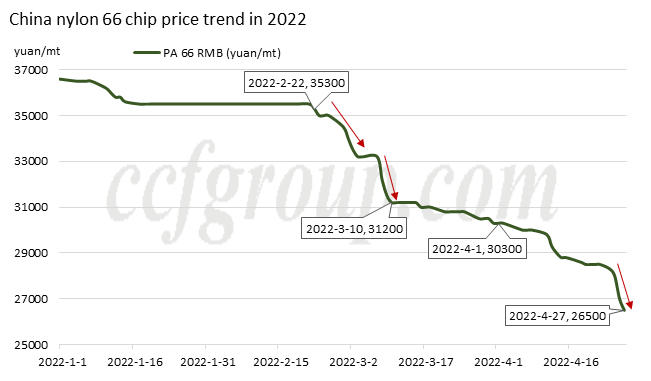
Nylon is a high-quality fabric that is only slightly more expensive than polyester. It is perfect for clothing that needs to be both durable and stylish.
- Look/Feel

Nylon has a wonderful, soft feel, which is why it is so popular. In addition to its greater choice of sheens, it also offers a greater variety of hues.
- NOT Printable at Low Volume
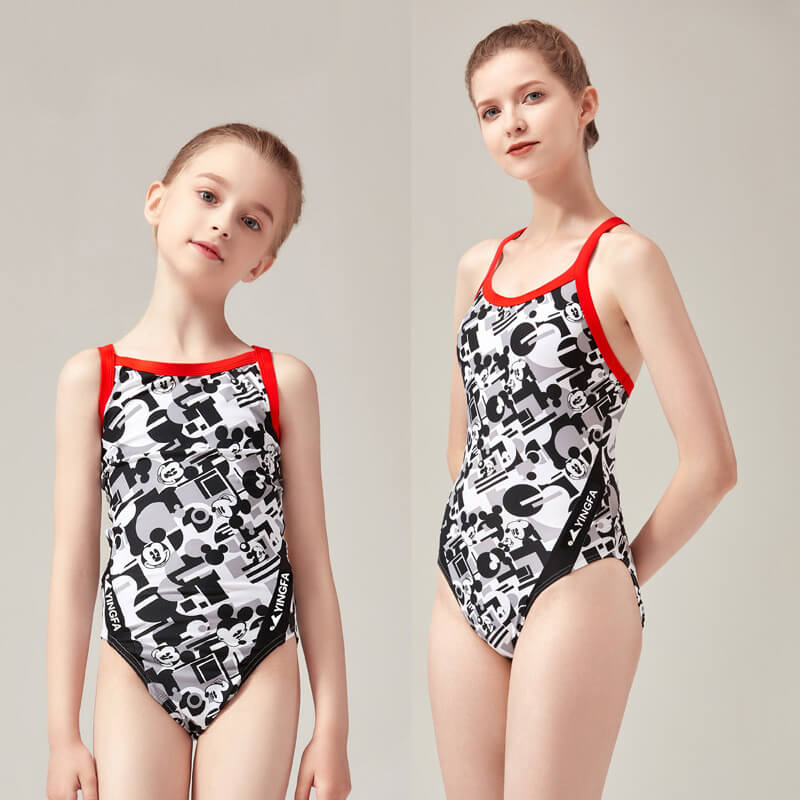
While many printers are compatible with nylon fabrics, using this fabric for sublimation printing is not recommended. The colors will fade quickly, and the definition of vector artwork will be poor. If you want a quality product, choose a different fabric.
POLYESTER BLENDS
Polyester blends, except for natural fibers, are the most common fabric used in competitive swimwear.
WHY?
Polyester blends are not only soft and strong but also chlorine and UV-resistant. In addition, these fabrics manage to absorb dye very well- allowing you to experiment with rich colors and prints.
- Durability
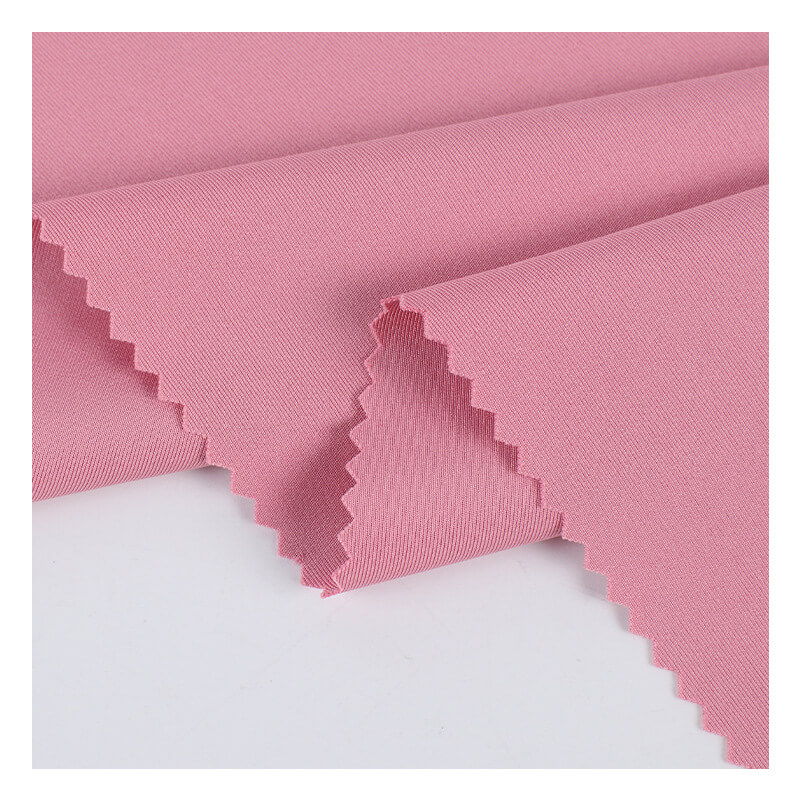
Polyester is an extremely tough fiber. Not only does it keep its shape well, but it also withstands water damage easily. It’s resistant to pilling (little balls of fuzz that can show up in areas where the fabric repeatedly rubs together), which is great for athletes or anyone who wears their clothes often.
- Colorfastness
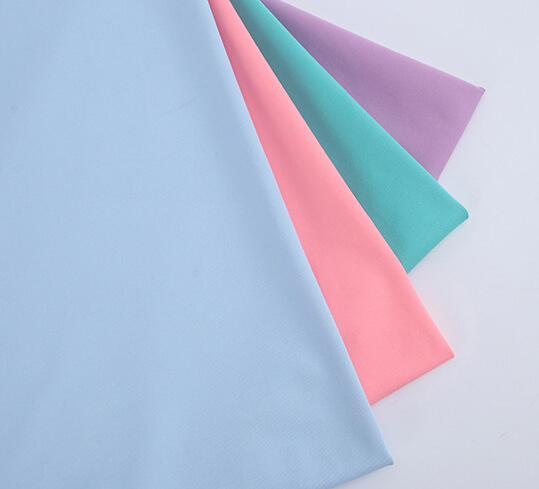
Polyester is a colorfast fabric that retains its hue and pattern over time.
- Cost
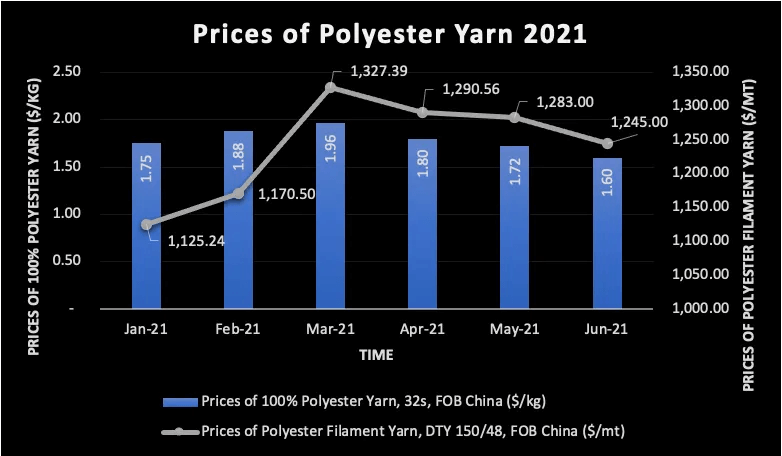
Polyester is an affordable swimwear fabric.
- Look/Feel
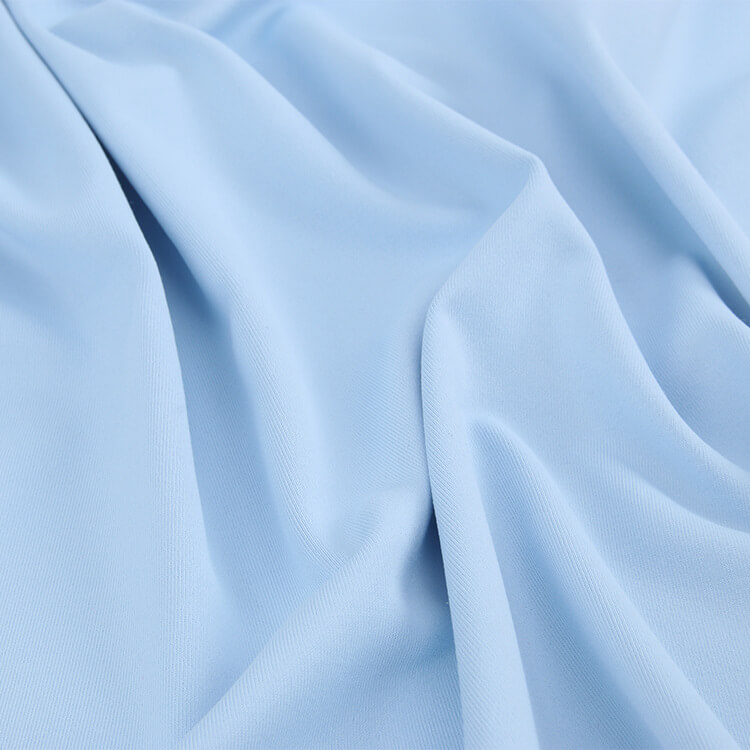
Polyester has been named “rough” because it’s not as soft to touch as other fabrics. However, contemporary polyester fabric has become much softer than before but isn’t quite as gentle as nylon.
- Digital Print

Bright, vibrant colors that are clear and permanent can be achieved through digital printing on polyester using sublimation. This coloring method employs dyes and machines that work best with polyester fabric.
What else look for in swimwear materials

WEIGHT
Fashion swimwear fabrics typically weigh 180-200 g/m². However, If you’re looking for anything specific that feels and looks more like lingerie or underwear, go for a fabric with a lighter weight, such as Gemma from Carvico, which has a weight of only 150 g/m². The fabrics we’ll be looking at are generally heavier, ranging from 200 to 220 grams per square meter (gsm). These are the types of fabrics that fall into the category of textured and other fabrics – which we’ll discuss later. But please pay attention to the see through problem when your design is in white or very light colors. I recomend using heavier than 250gsm fabrics.
COMPOSITION
It’s also a great choice to research the ‘ingredients’ in advance and learn the characteristics of each one. For example, the Spandex/Elastane/LYCRA® provides most of the stretch.
Nylon is a synthetic polymer, while spandex is a manufactured fiber. The nylon in the fabric provides strength, while the spandex offers elasticity and shape retention.
More spandex means a softer feel, fewer wrinkles, and better shape retention; however, too much spandex may make clothing feel hard or rubbery. To get the best idea of fabric, it’s advisable that you feel or see swatches beforehand. Also, don’t hesitate to request more information from the supplier if needed, as descriptions might not always be accurate.
QUICK-DRYING
Most people only think about swimwear in the context of summertime fun, but if you’re the type who loves to take a dip no matter the season, you know that quick-drying materials are a must. Nobody likes to be trapped in a damp swimming suit, even less so when the weather is chilly. That’s why many manufacturers now offer swimwear made from quick-drying synthetic materials.
These textiles are intended to wick moisture away, so you can enjoy a comfortable swim without worry. In addition, quick-drying materials are often more durable than their natural counterparts, meaning they’ll last longer even with regular use.
SUSTAINABILITY
Sustainability is an important but often overlooked factor in the swimwear industry. While synthetic materials are widely considered the best option for swimwear due to their durability and flexibility, they are also the least environmentally friendly option.
ECONYL® is regenerated nylon made from pre- and post-consumer materials, offering a more sustainable alternative. The ECONYL® process begins with collecting post-consumer waste, including fishing nets, carpet flooring, and industrial plastic. This waste is then cleaned and shredded into small pieces before being melted down and reformed into new yarn. The yarn is then used to create high-quality fabrics virtually indistinguishable from virgin nylon.
Using waste materials that would otherwise end up in landfills or oceans, ECONYL® can significantly reduce its environmental impact while providing superior quality fabric. As awareness of the importance of sustainability continues to grow, more brands will likely begin to offer sustainable options like ECONYL®.
STRETCH
While a snug fit is desirable in swimwear, it’s also important that the fabric has some stretch to it. This is because swimsuits are often tight-fitting and need to be able to move with the body. A fabric with no stretch will simply not offer the same level of comfort or support. In addition, a fabric with little or no stretch is more likely to misshapen over time. It’s also more likely to pill and become damaged from repeated wear and washing.
For all these reasons, swimwear fabrics need to have good stretch properties. Thankfully, many innovative fabric technologies available can provide just the right amount of stretch for a comfortable and supportive fit.
COMFORT
Your pleasure will be significantly reduced if you have an uncomfortable swimming suit. Freedom of movement is also assured.
A swimsuit’s fabric must be stretchy enough to follow your body’s movement. Also, it should be soft, so it doesn’t cause irritation from rubbing or chafing. The softer the material is, the better it’ll work as a swimsuit.
FIGURE-FLATTERING
Everyone wants to look good at the beach or by the pool, and elastane, figure-hugging, is a component of today’s swimsuit textiles. With a more athletic form, the greatest swimwear material will make us seem smaller by allowing us to control and contain those parts of our bodies we’d all prefer to conceal.
ANTI-PILLING
If you want a swimsuit that will last multiple seasons and be resistant to damage, choose a fabric with anti-pilling qualities. Nylon is known to pill over time due to its vulnerability to chlorine damage. Polyester offers the greatest resistance against corrosive substances. If preventing pilling altogether is important, use a material containing polyester fibers.
EASE OF CARE
Repairing your clothing should be done as often as possible, especially if the fabric is constantly exposed to substances like chlorine. An excellent way to avoid this issue is by investing in synthetic fabrics that are easier to take care of.
Only a few minutes in a warm wash and a slight drip-dry are required to eliminate the bleach odor from your swim. So make sure your swimming fabric includes a washer-and-go option.

3 Responses
Great post
Hi Ben, thanks for the comment. Enjoy reading 🙂
Excellent post. Very informative. However you should update the price graphs now to reflect the latest reality 🙂 Obviously a lot of the other content is still relevant!